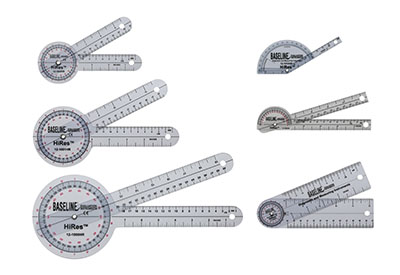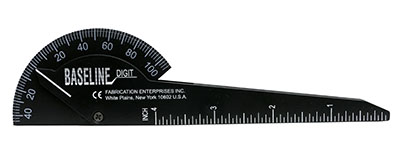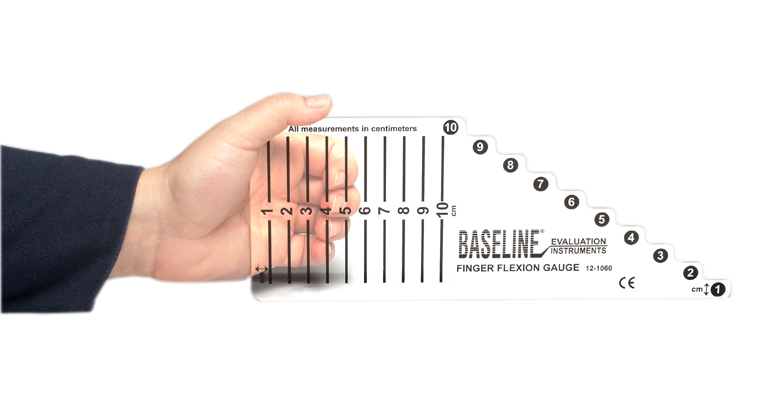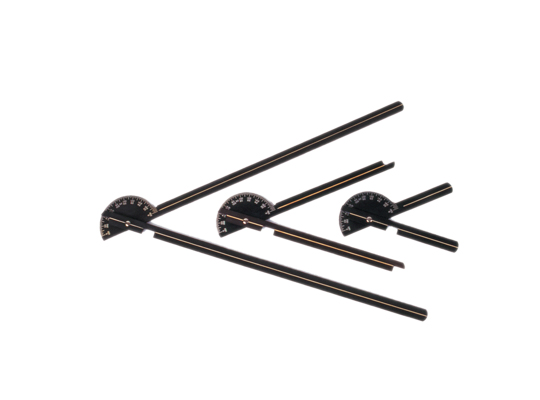About the Baseline® brand
Baseline® measurement instruments have been used by orthopedists, therapists, FCE administers and professors since the 1980s. Many of you who have received therapy after an injury have probably had your progress tested throughout your rehabilitation with a Baseline® measurement instrument.
The product line includes instruments to measure strength, range-of-motion, sensory perception, body measurements and more. Many Baseline® instruments are manufactured in the USA and carry the CE mark for sale outside the USA.
The Baseline® product category
Below is a listing of some Baseline® products. Select a category link to learn more.
- Baseline® hydraulic dynamometers – objective strength evaluators including hand dynamometers, pinch gauges, push-pull (MMT) dynamometers, wrist dynamometers and more.
- Baseline® goniometers – metal and plastic models measure range-of-motion of finger through large joints. Featuring the patent pending Absolute+Axis™ attachment and the Xtender® extendable goniometer.
- Baseline® inclinometers – including the Bubble® and adjustable Acu-Angle® models.
- Baseline® alignment measurement – including scoliosis screening.
- Baseline® sensory measurement – including monofilaments, percussion hammers, Discim-A-Gon™ 2-point discrimination, tuning forks and more.
- Baseline® pulse oximeters – including entry level and deluxe model with waveform.
- Baseline® skinfold calipers
- Baseline® sit-and-reach trunk flexibility test
- Baseline® spirometer – windmill type
Baseline products

The Absolute+Axis (AA) goniometer establishes a "true" vertical or horizontal to the start point of a measurement. Many goniometric measurements require one arm of the goniometer to be positioned either horizontally or vertically. The other arm is then lined-up with the patient's body part. Until now, the practitioner had to "assume" or "eyeball" the vertical or horizontal position. This interpolation is often incorrect and introduces measurement error. The Absolute+Axis goniometer removes measurement variability and allows the practitioner to concentrate on correct placement of the other goniometer arm and the patient's body position. Some measurements the AA goniometer is designed to improve are: shoulder and hip rotation (internal, external); cervical flexion, extension, rotation and side bending; hamstring flexibility; and active ROM.


 View Cart (0)
View Cart (0)




